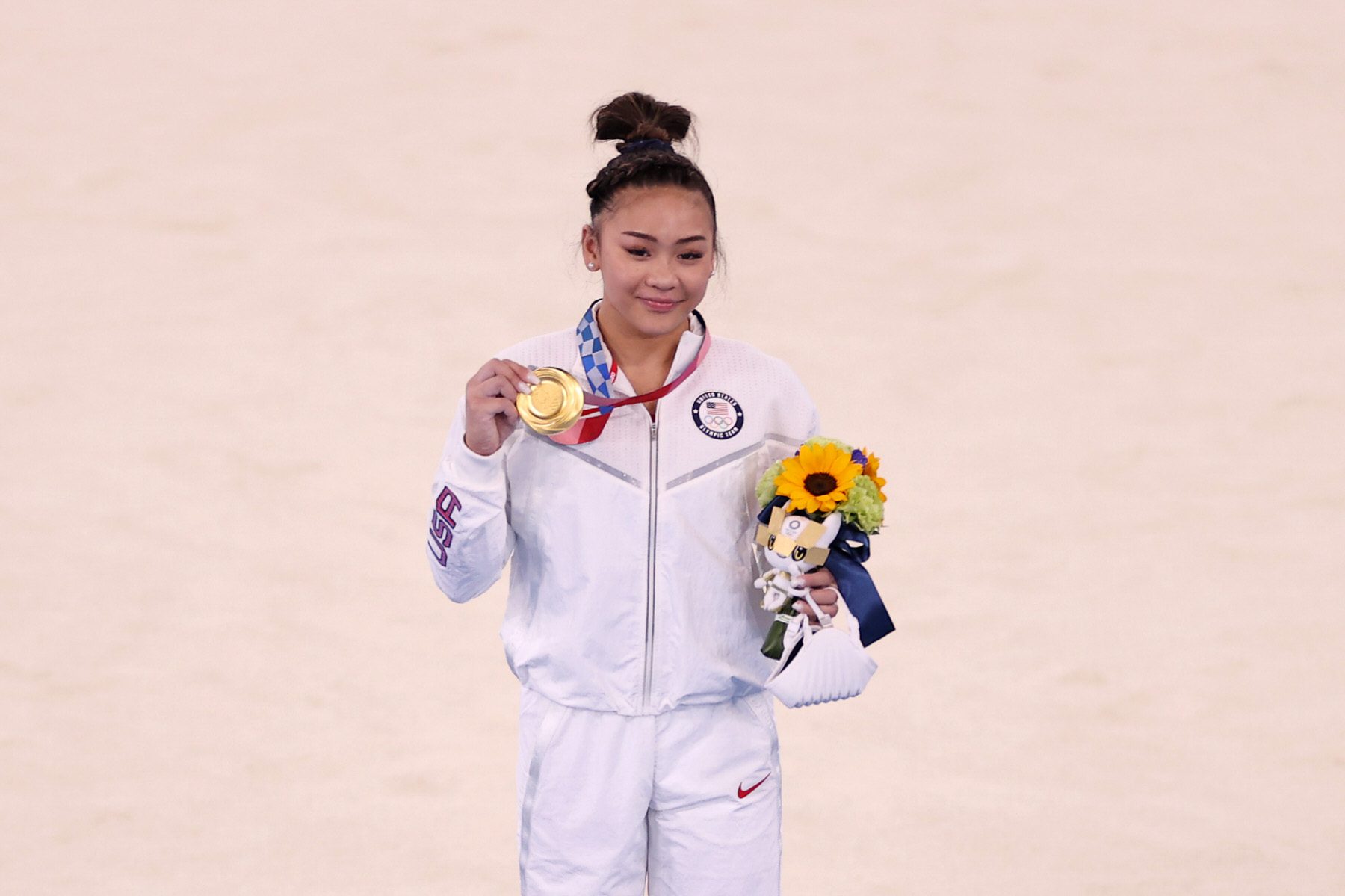Sunisa “Suni” Lee came out on top in the women’s individual all-around competition, making the 18-year-old gymnast not only the first Hmong American to compete in the Games, but the first to win a gold medal. With Lee’s win, an American has won the last five Olympic titles.
Her friends and family watched from her home in St. Paul, Minnesota, erupting in cheers as scores finalized and it became clear that she would hold the lead after a floor routine from Brazil’s Rebeca Andrade, who ultimately took silver.
Lee is the first Hmong American to compete on Team USA, and reportedly the first woman of Asian descent to win individual gold in the all-around. Celebrations for her win, including from her family, quickly poured in on Thursday, alongside heartfelt acknowledgements from earlier in the week of the community hopes that she carried to Tokyo.
“We hope all of America is proud of Suni. What she’s achieved showcases what is possible here in the United States,” Sia Lo, a lawyer in St. Paul who is part of Lee’s extended family, told the local Star Tribune, per NPR.
Before the all-around competition, Lee had already helped Team USA win silver in the women’s team finals.
Lee’s uneven bar routine, considered one of the most difficult in the world, combines four of the most challenging maneuvers performed in the event, as explored in a New York Times feature interview prior to the Games. Precise mid-air adjustments in speed, angle, and timing — plus her choice to combine moves that no other gymnasts in the games have attempted to connect — are a force to be reckoned with.
“Just recently, it started to click. And I started to realize that I could be at the top with Simone [Biles],” she told the Times.
Lee’s victory resonates especially strongly among Hmong Americans, many of whom came to the United States in the aftermath of the Vietnam War and related conflicts in Southeast Asia. The Hmong, an ethnic group slowly driven southward from China’s central basin, fought in Laos with the backing of the United States, and many became refugees after the American forces pulled out. Minnesota has been home to the second-largest Hmong population in the U.S.
Many of the Hmong began their life in the United States as refugees, and the community is also marginalized within the greater demographic of Asian Americans. More Hmong Americans — of first and second generations — live in poverty than all other Asians in the country, Pew Research data collected through 2019 found. Additionally, fewer of those in the Hmong community are homeowners.
Patsy Thayieng, a recent college graduate and a former gymnast, said that the high expenses associated with gymnastics — equipment, travel, coaching and more — made Lee’s ascent all the more important. “You have to understand, this is a highly inaccessible sport, especially for communities like ours because it’s so expensive and time consuming,” she told TIME Magazine.
Lee began practicing gymnastics in 2009, when she was six years old. She told NBC Nightly News on Wednesday that in the past year, she’s learned not to second-guess herself.
“I’ve learned that I’m better than I think I am,” she said. And I need to stop putting so much pressure on myself. Because it’s only getting in the way and it’s not helping me get better.”
Lee has also faced significant challenges outside the sport. Her father, who she describes as her best friend and coach, became paralyzed from the chest down in a 2019 accident, two days before her competition at the U.S. National Gymnastics Championships. In 2020, she lost an uncle and aunt after they contracted the coronavirus, she told NBC Nightly News.
“I’ve gone through so much,” she said, “and I still manage to get through it every time.”







